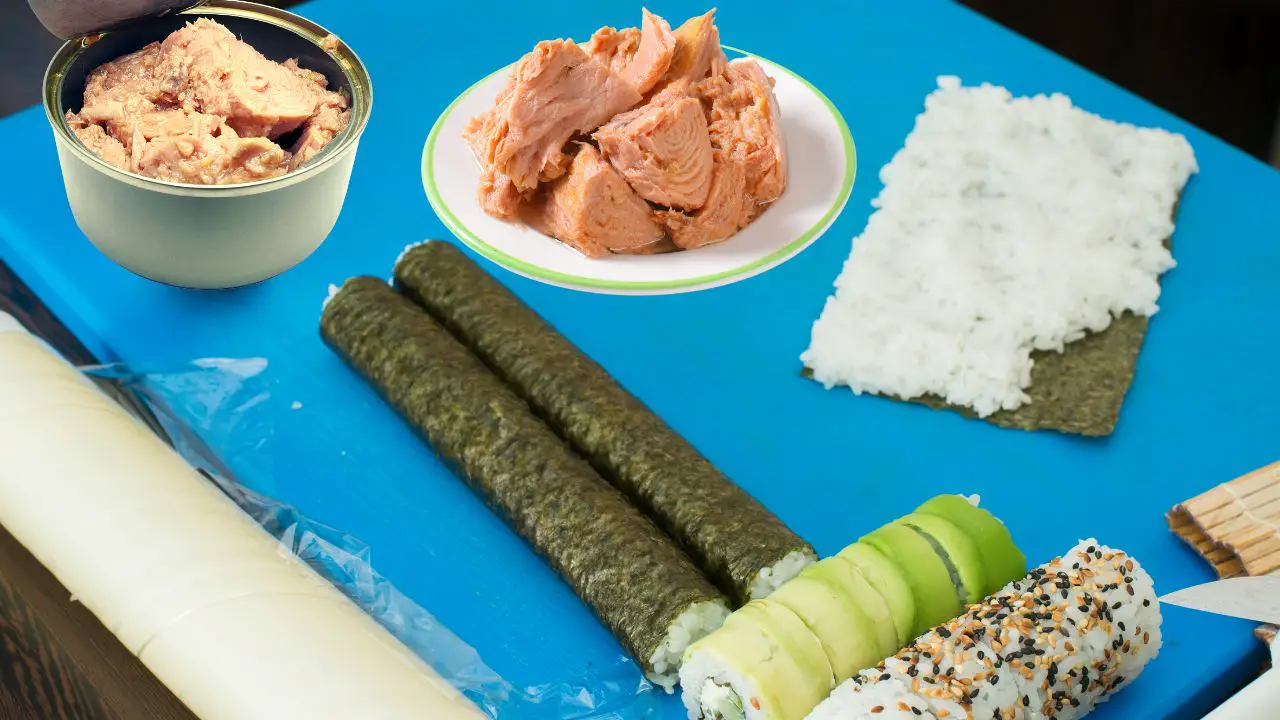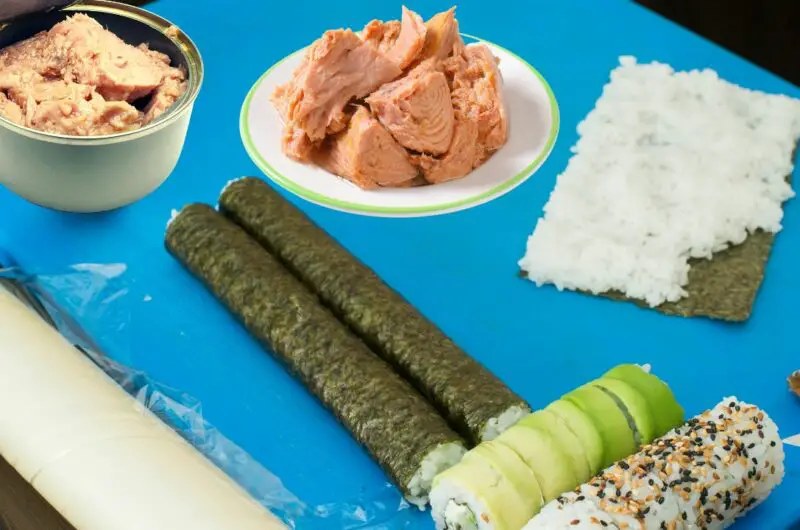Simple Sushi-Making on a Budget: Canned Tuna for Sushi Rolls!
If you’re a sushi aficionado, you know that fresh fish is always best. But what if you’re in a pinch and all you have is canned tuna or salmon? Can you still make sushi with it?
The answer is yes! You can use canned tuna for sushi, and While the texture of canned fish isn’t ideal, it’s still possible to use it in sushi. Here’s how.
What Is The Best Fish For Making Sushi?
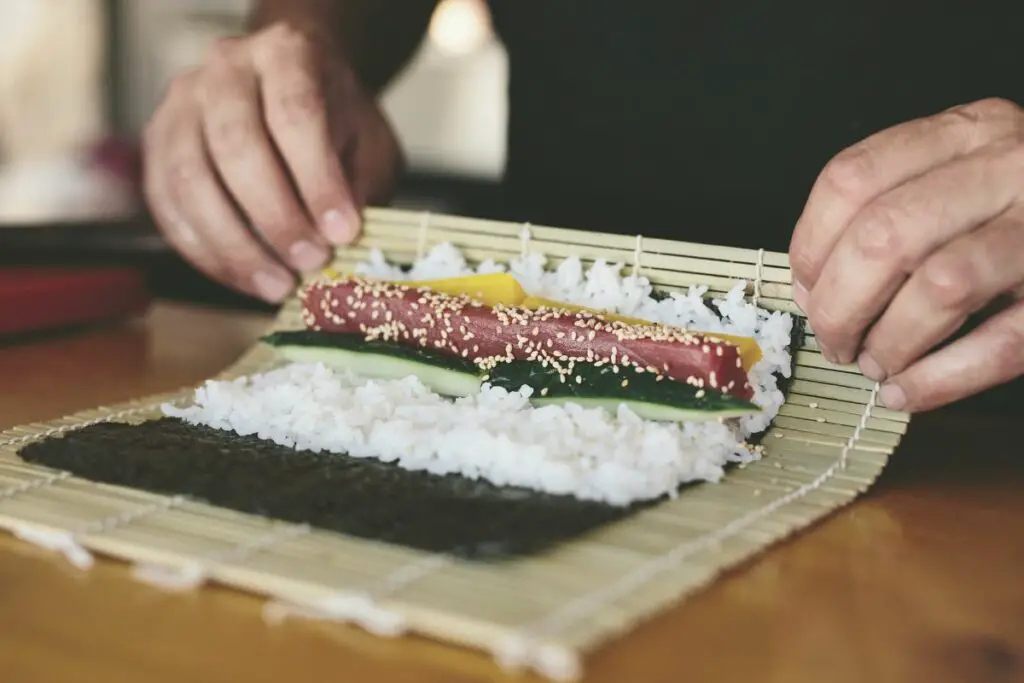
There is the misconception that the best sushi is prepared with fish that is directly caught from the ocean and immediately consumed.
This is false. Almost all tuna is caught, properly put down, and bled out (a technique called ike jime in Japan), then immediately put on ice. The freezing process not only preserves the quality but also kills any parasites that may be lingering in the fish.
Similarly, this process also applies to salmon. When a whole salmon arrives at a sushi restaurant, it is first broken down and typically cured with a salt and sugar mixture.
This simple cure pulls out any impurities and also slightly seasons the fish.
After the curing process, the salmon is then cut into sakus (a specific proportion that can be conveniently pulled from the freezer/storage when needed), wrapped, and then frozen.
This freezing process has the same effect that it had on tuna; it kills any parasites and retains freshness.
There is also the traditional Edomae-style sushi that is taking hold in America. This traditional style focuses on curing and aging fish in order to extend the life of the product.
Many fish that are more susceptible to spoilage, such as mackerel and shad, actually go through a curing and vinegar marination process. These fish are far from the “fresh” ideology that many people assume makes sushi delicious.
Best Canned Fish To Use For Sushi?

When sourcing canned tuna and salmon, it’s always important to find the best product available. The first step in this process is determining if the fish is wild-caught or farmed.
Wild-caught fish are typically leaner, cleaner, and just taste better. A wild-caught fish feeds on natural and varietal sources of food. This contributes to the overall taste of the fish.
This ideology translates to meat as well. A roaming cow that eats primarily grass tastes much better than a caged and corn-fed cow.
Another important factor to consider is the means by which the fish was caught. Always try to buy canned fish that have been caught by pole and line.
The Pole & Line Fishing technique creates less bycatch and is a much more humane way to source your fish. There will be an indicator on each can of tuna to depict that the fish was caught responsibly.
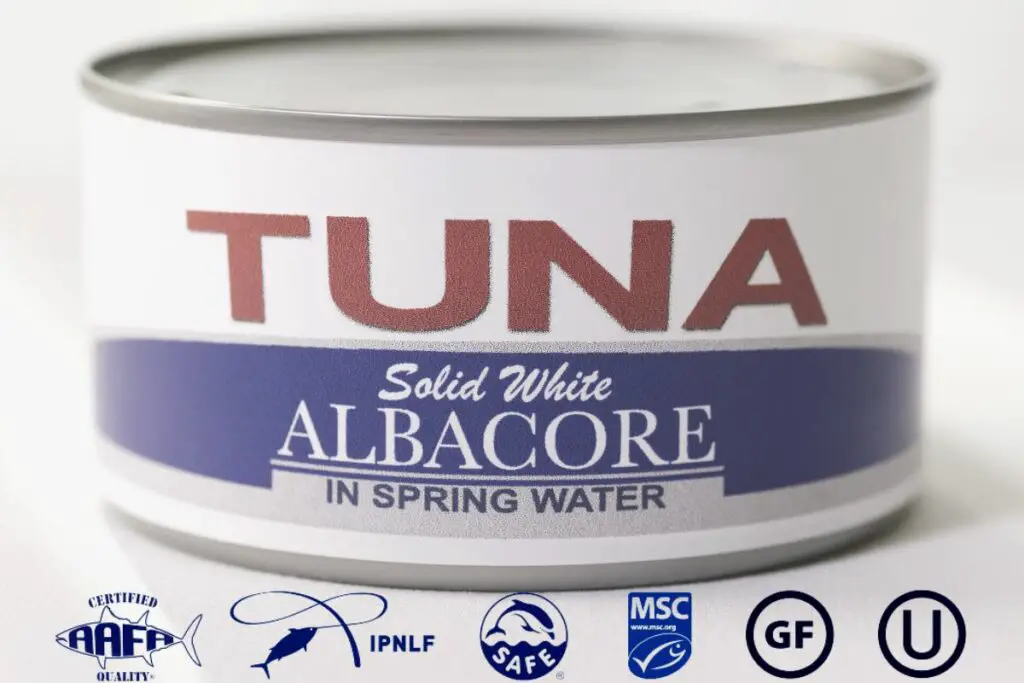
Although this doesn’t necessarily affect the overall flavor, it’s just a more sustainable way to buy and eat fish.
In addition, you should also consider how the tuna or salmon is processed and packaged. When using canned fish for any type of sushi, you should try to buy a product that is packaged in salt water or a water brine.
This is the best way to ensure that the canned tuna or salmon natural flavors have not been affected or altered by any type of oil or seasoning.
It is also much easier to drain the water from a can versus trying to separate the fragile fish filets from oil. If you absolutely cannot find canned fish packaged in water, extra virgin olive oil-packaged fish will do as well.
TAP ON IMAGE TO VIEW PRICE
And lastly, Skipjack tuna, Albacore tuna, and Yellowfin tuna would all work great in sushi. Even Bluefin tuna is an excellent option if you could manage to find it and are willing to pay around 30 dollars per can.
However, instead of the type of tuna, you should pay more attention to how the tuna is processed.
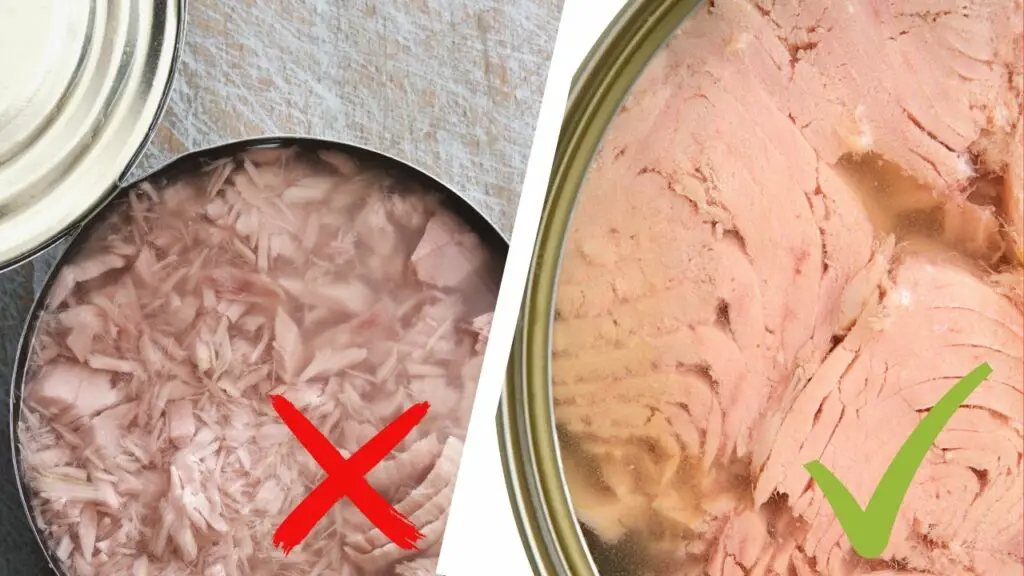
When making sushi, you want to use solid tuna or tuna chunks and avoid tuna flakes or grated tuna. The latter is just a soggy mess and has horrible texture, and is difficult to use.
When it comes to canned salmon, both red and pink salmon are for making sushi; however, I personally like to use red canned salmon as it seems to have a fuller, richer flavor, better taste, and firmer texture.
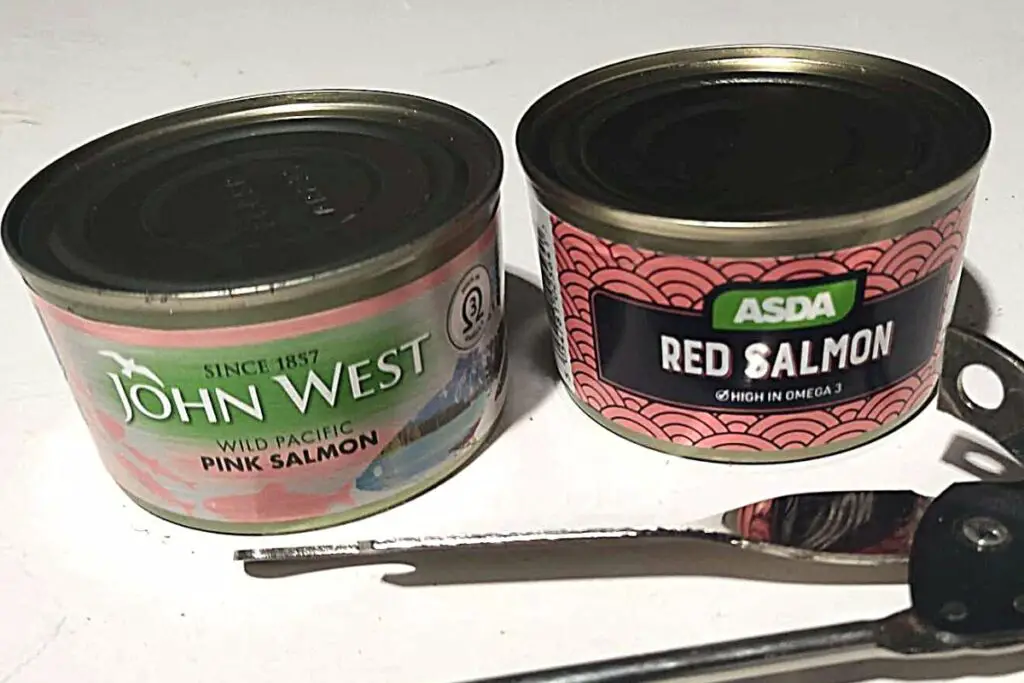
In review, you should always buy wild-caught, Pole & Line Fishing certified cans of tuna or salmon. If possible, you should also buy fish that has been packaged in water or brine instead of oil and canned as solid or chunks and not flakes.
Not only will your sushi taste better, but your conscience will also not take a hit, so it’s definitely a win-win scenario!
Read Also: How To Make Brown Rice Sticky For Sushi? (Plus 5 Whole Grain Sushi Recipes).
Best Sushi To Make With Canned Tuna And Salmon
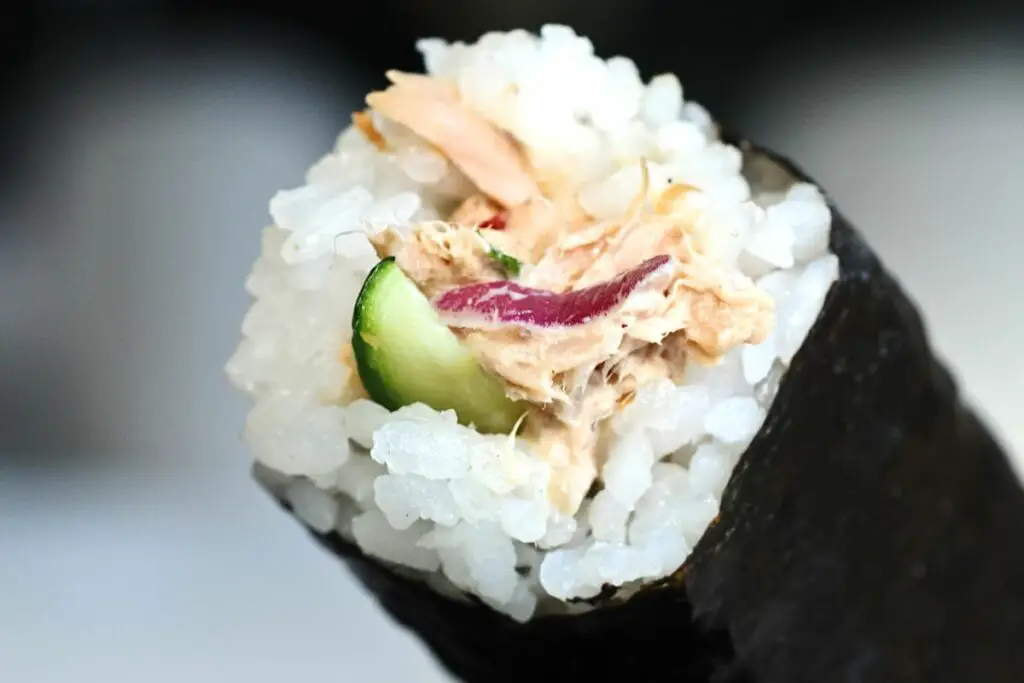
The word “sushi” is a very general term. Just like the word “soup,” there are many different forms of sushi.
The most common form, wrapped in nori (compressed and toasted sheets of seaweed) and cut into rolls, is called temaki or maki sushi, hand-rolled sushi, or sushi rolls.
There is also chirashi sushi, which is simply a bowl of sushi rice (short-grain rice seasoned with rice vinegar) topped with fish and seasoned with soy sauce, wasabi, and a variety of other ingredients.
Then, there is nigiri sushi, which is a ball of rice with a single piece of fish atop formed into the perfect, bite-sized oblong shape. This style of sushi is typically served in more high-end sushi restaurants and requires the most skill and precision to make.
When using canned tuna and salmon, I recommend making temaki, maki sushi, and chirashi sushi. The overall texture of the canned fish will be too fragile to slice into a single serving, so nigiri sushi would be too much of a hassle to make with canned fish.
How To Make Sushi With Canned Tuna or Salmon?

Due to the overall texture and nature of canned tuna or salmon, I would recommend starting out by draining the water and allowing the fish to drain for a few minutes without squeezing it.
If the fish is firm enough, it also doesn’t hurt to pat down the chunks with a piece of paper towel to pull out as much moisture as possible.
After properly draining and drying the fish, you should break up the chunks into small pieces with a fork and season them with a sauce and various vegetables of your choice.
Think of it as the quintessential tuna salad, but for sushi instead. You can always go with a mayonnaise-based sauce because who doesn’t like spicy tuna rolls, right?
For a lighter approach, you can also use a simple soy sauce with some dark sesame oil.
Read Also: How to Season Sushi Rice? (Seasoning Ratio and Ingredients).
Read Also: How To Keep Sushi Fresh Overnight? (Storage Tips For Extended Shelf Life).
And The Verdict Is?

Yes, you can use canned tuna for sushi, as well as salmon and other canned fish. The key is to drain the tuna very well before using it. When choosing a canned tuna, look for one packed in water rather than oil and in junk rather than flakes.
You also have the freedom to season the fish with any sauce like spicy mayo, miso mayo, garlic mayo, eel sauce, sriracha sauce, sesame oil, ponzu, nikiri, or any other sweet-and-salty classic that you like. Just make sure you have fun and enjoy customizing your sushi for you and your family!
